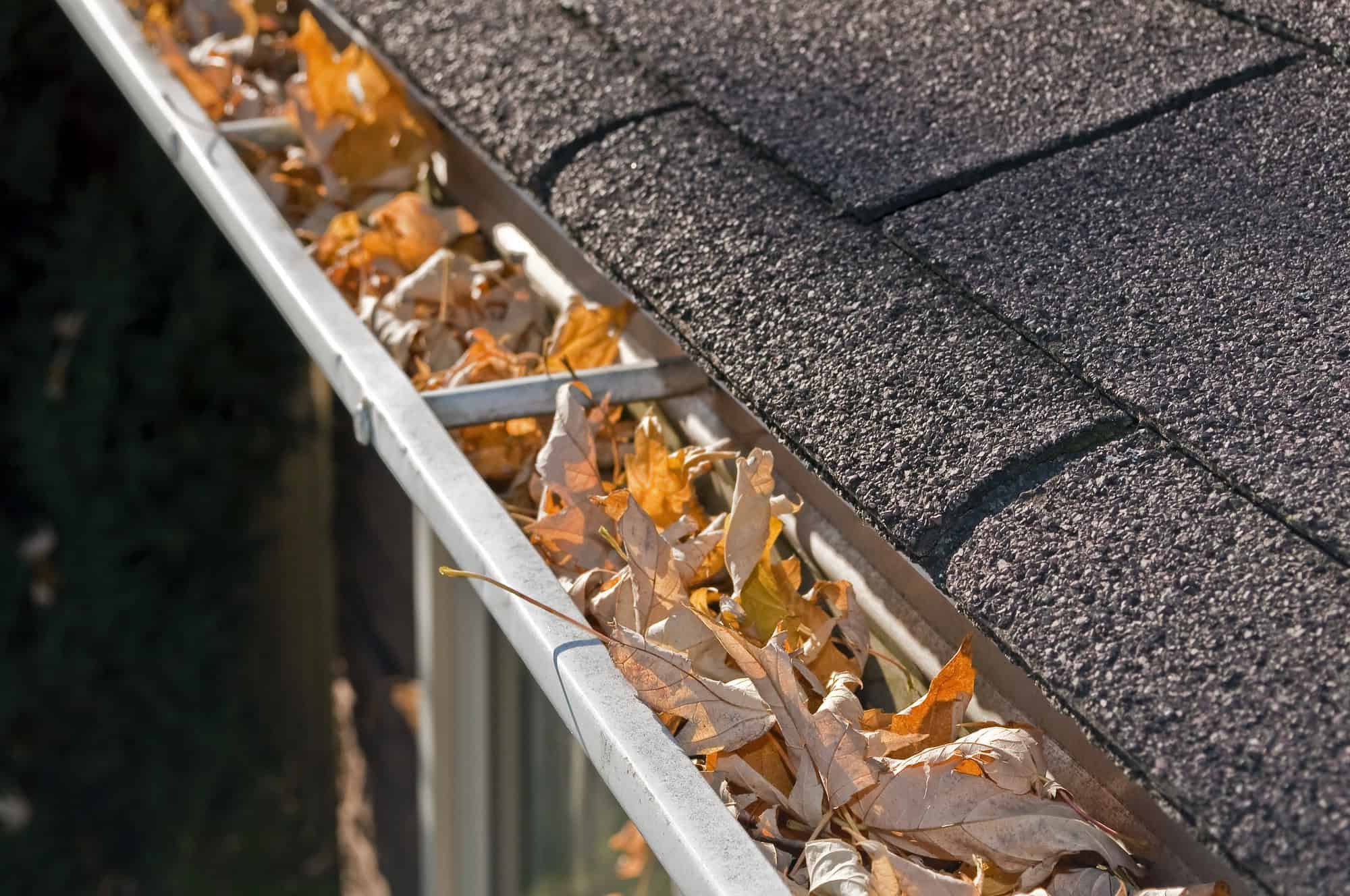Winter preparation for your home’s exterior can mean the difference between a comfortable, problem-free season and costly emergency repairs during Toronto’s harshest weather. The time to address potential issues is before the first snowfall, when problems are manageable and repairs can be completed in favorable conditions rather than during freezing temperatures and dangerous ice conditions that make even simple maintenance hazardous and expensive.
Toronto’s winter climate presents unique challenges that can quickly overwhelm unprepared homes, from heavy snow loads that stress roofing systems to freeze-thaw cycles that can turn minor leaks into major structural problems. The city’s average winter temperatures frequently fluctuate around the freezing point, creating ideal conditions for ice dam formation, while the region’s significant snowfall averaging 115-130cm annually can hide developing problems until spring thaw reveals extensive damage. Proper fall preparation addresses these vulnerabilities systematically, protecting your investment while ensuring your family’s comfort and safety throughout the challenging months ahead when emergency repairs become both difficult and expensive.
Essential Roof System Inspection and Maintenance
Your roof system serves as the primary defense against Toronto’s winter weather, making thorough inspection and maintenance critical for preventing serious problems during the harsh months ahead when repair options become limited and emergency services come at premium costs.
Comprehensive Shingle and Surface Assessment
Missing or damaged shingles create immediate vulnerabilities that Toronto’s winter weather can quickly exploit, allowing water infiltration that leads to ice dam formation and interior damage. Cracked, curled, or loose shingles may appear stable in mild weather but can fail catastrophically when subjected to winter’s freeze-thaw cycles and wind loads.
Granule loss from aging shingles reduces weather protection effectiveness and often indicates approaching replacement needs that should be addressed before winter weather arrives. Toronto’s UV exposure during summer months accelerates granule deterioration, while winter conditions test the remaining protection to its limits.
Flashing inspection around chimneys, vents, and roof penetrations reveals potential leak sources that winter conditions can rapidly worsen. Separated or corroded flashing allows water infiltration that freezes and expands, creating larger gaps that permit substantial water penetration during spring thaw.
Structural assessment includes checking for sagging areas, damaged decking, or compromised support that could fail under Toronto’s snow loads. Early identification allows for reinforcement before winter stress tests reveal weaknesses through catastrophic failure.
Attic Ventilation and Insulation Evaluation
Proper attic ventilation prevents ice dam formation by maintaining consistent roof temperatures that prevent uneven snow melting. Toronto’s building codes require specific ventilation ratios, but many older homes fall short of current standards and need improvement before winter arrives.
Insulation adequacy must meet Toronto’s climate requirements, with current standards calling for R-50 or higher in attic spaces to prevent heat loss that contributes to ice dam formation. Insufficient insulation not only increases heating costs but creates conditions for serious winter problems.
Air sealing between living spaces and attic areas prevents warm air infiltration that can cause roof heating and subsequent ice dam formation. Common leak sources include recessed lighting, bathroom fans, and utility penetrations that require sealing before winter.
Vapor barrier integrity helps prevent moisture accumulation in attic spaces that can lead to condensation problems and mold growth when combined with inadequate ventilation during Toronto’s humid winter conditions.
Professional Roof Inspection Benefits
Expert assessment identifies subtle problems that untrained eyes might miss, including early-stage failures that could become serious during winter weather exposure. Professional roof inspectors understand Toronto’s specific climate challenges and common failure patterns.
Safety considerations make professional inspection preferable for comprehensive roof assessment, as trained professionals have proper equipment and experience to safely access all roof areas while identifying potential hazards.
Documentation provided by professional inspections creates records useful for insurance claims and warranty purposes while establishing baseline conditions for monitoring future changes or damage that might occur during winter weather.
Repair prioritization from professional assessment helps homeowners focus limited time and budgets on the most critical issues that require attention before winter, while identifying less urgent items that can be addressed during favorable spring conditions.

Eavestrough System Optimization for Winter Performance
Eavestrough systems face their greatest challenges during Toronto’s winter months, when ice formation and debris accumulation can quickly compromise drainage effectiveness and lead to serious water management problems that affect your entire property.
Thorough Cleaning and Debris Removal
Complete debris removal from eavestroughs and downspouts eliminates blockages that can cause ice dam formation when winter weather arrives. Toronto’s abundant urban tree cover creates significant debris accumulation that must be cleared before freezing temperatures make cleaning dangerous and ineffective.
Downspout inspection includes checking for obstructions, damage, or separation that could cause water backup during spring thaw when large volumes of snowmelt must be managed quickly and effectively to prevent foundation problems.
Underground drainage system testing ensures that buried downspout extensions and French drain connections function properly before winter weather makes repairs difficult or impossible. Blocked underground systems can cause water to surface near foundations during critical spring thaw periods.
Gutter joint sealing prevents small leaks from becoming major problems when freeze-thaw cycles cause expansion that can worsen existing separations and create new failure points throughout the drainage system.
Structural Integrity and Slope Verification
Proper slope maintenance ensures effective water flow toward downspouts rather than pooling in sections where ice can form and create blockages. Toronto’s freeze-thaw cycles can gradually alter eavestrough alignment, creating drainage problems that worsen throughout winter.
Bracket security becomes critical when ice loads stress eavestrough systems beyond normal design limits. Loose or damaged brackets can allow sections to sag or separate, creating drainage failures that redirect water toward foundations rather than away from them.
Capacity assessment determines whether existing eavestrough systems can handle Toronto’s precipitation intensity, particularly during rapid snowmelt events when large volumes of water must be managed quickly to prevent overflow and foundation infiltration.
Expansion joint inspection reveals potential failure points where thermal movement during Toronto’s extreme temperature variations can cause separation or damage that compromises system integrity and drainage effectiveness.
Winter-Specific Preparation Measures
Heating cable installation in problem areas can prevent ice formation that blocks drainage function during Toronto’s extended freezing periods. Strategic cable placement addresses known trouble spots while maintaining drainage capacity throughout winter.
Leaf guards or protection systems reduce debris accumulation throughout winter while maintaining drainage effectiveness during occasional thaw periods when melting snow must be managed through the eavestrough system.
Downspout extensions ensure adequate water discharge distance from foundations, particularly important during spring thaw when large volumes of snowmelt can quickly saturate soil around foundations and cause infiltration problems.
Ice dam prevention strategies include ensuring adequate attic insulation and ventilation while addressing heat loss sources that can cause uneven roof warming and subsequent ice formation in eavestrough systems.
Foundation and Drainage System Winterization
Foundation protection requires comprehensive attention to drainage systems and water management strategies that prevent infiltration during Toronto’s challenging spring thaw conditions when frozen ground prevents normal drainage absorption.
Exterior Foundation Preparation
Grade verification ensures water flows away from foundations rather than pooling in areas where spring snowmelt can accumulate and create hydrostatic pressure against basement walls. Toronto’s clay soils require particular attention to grading that maintains effectiveness despite seasonal soil movement.
Window well maintenance includes cleaning debris and ensuring proper drainage to prevent water accumulation during rapid snowmelt events. Window wells are particularly vulnerable to flooding during Toronto’s spring thaw when large volumes of water seek drainage paths.
Foundation crack sealing prevents water infiltration that can worsen when freeze-thaw cycles cause expansion and contraction. Small cracks can become major problems when water freezes and expands within foundation materials during Toronto’s variable winter temperatures.
Landscaping preparation includes removing vegetation that could trap snow against foundations while ensuring proper drainage around planted areas that might collect water during spring thaw conditions.
Perimeter Drainage System Inspection
French drain functionality must be verified before winter to ensure these critical systems can handle spring snowmelt effectively. Clogged or damaged French drains can cause water backup that leads to foundation infiltration during peak demand periods.
Surface drainage features including swales and drainage channels require clearing and maintenance to ensure effectiveness during spring thaw when surface water management becomes critical for foundation protection.
Sump pump testing and backup system verification ensure basement protection during spring flooding conditions that commonly affect Toronto homes when rapid snowmelt combines with frozen ground conditions that prevent normal drainage absorption.
Discharge point maintenance ensures that drainage systems direct water to appropriate locations rather than toward neighboring properties or back toward foundations where it can cause infiltration problems during high-volume discharge periods.
Seasonal Water Management Planning
Irrigation system winterization prevents freeze damage to outdoor water systems while eliminating potential water sources that could contribute to foundation infiltration problems during winter months.
Hose and spigot protection prevents freeze damage that could cause interior water leaks and foundation infiltration when damaged systems fail during winter conditions or spring startup periods.
Pool and water feature winterization eliminates potential water accumulation sources while preventing freeze damage to systems that could create drainage problems or water management challenges during spring startup.
Storm water planning considers how winter precipitation and spring snowmelt will be managed around your property, ensuring adequate preparation for Toronto’s variable precipitation patterns and intensive spring thaw conditions.

Preventing Ice Dams and Winter Water Damage
Ice dam prevention represents one of the most critical aspects of winter preparation in Toronto’s climate, as these formations can cause extensive damage while creating dangerous conditions that threaten both property and personal safety.
Understanding Ice Dam Formation in Toronto’s Climate
Heat loss from inadequately insulated or ventilated attic spaces causes uneven roof warming that melts snow from underneath, creating water flow that refreezes at colder roof edges where ice dams form and block subsequent drainage.
Temperature fluctuation patterns in Toronto create ideal ice dam conditions through repeated freeze-thaw cycles that build ice formations progressively throughout winter, creating increasingly serious blockages that force water backup under shingles.
Snow accumulation patterns on Toronto roofs can create conditions for ice dam formation, particularly when combined with heat loss that causes uneven melting and refreezing cycles that build dangerous ice barriers at roof edges.
Wind-driven snow can create unusual accumulation patterns that contribute to ice dam formation in areas where standard preparation might not anticipate problems, requiring comprehensive approach to prevention strategies.
Comprehensive Ice Dam Prevention Strategies
Attic insulation upgrades to current Toronto building code standards help prevent heat loss that causes roof warming and subsequent ice dam formation. Proper insulation installation requires professional expertise to ensure effectiveness without compromising ventilation.
Ventilation system improvements ensure adequate air circulation that maintains consistent attic temperatures throughout Toronto’s variable winter conditions, preventing the heat buildup that contributes to ice dam formation.
Air sealing measures prevent warm air infiltration from living spaces into attic areas where it can cause roof warming and ice dam formation. Professional air sealing addresses common leak sources that contribute significantly to winter problems.
Heating cable systems provide backup protection in areas prone to ice dam formation, offering controlled heating that maintains drainage function during extended freezing periods common in Toronto’s winter climate.
Emergency Preparedness and Response Planning
Professional ice dam removal services provide safe, effective solutions when prevention measures prove insufficient during severe winter conditions. Attempting DIY ice dam removal can cause roof damage and create serious safety hazards.
Emergency contact information for qualified contractors ensures prompt response when winter problems develop, as emergency services during severe weather often require immediate action to prevent extensive damage.
Insurance documentation and claim procedures should be understood before problems occur, ensuring proper coverage and efficient claim processing when winter damage requires professional restoration services.
Temporary protection measures can minimize damage when winter problems develop before professional services can respond, but should never replace proper professional intervention for serious ice dam or drainage failures.
Professional Assessment and Maintenance Services
Comprehensive winter preparation often requires professional expertise to identify vulnerabilities and implement solutions that provide reliable protection throughout Toronto’s challenging winter conditions while ensuring compliance with local building standards.
When to Seek Professional Assistance
Complex roofing systems with multiple levels, dormers, or architectural features require professional assessment to identify all potential problem areas and develop comprehensive protection strategies that address specific vulnerabilities.
Older homes may have systems that don’t meet current standards for winter protection, requiring professional evaluation to determine necessary upgrades and improvements that provide adequate protection in Toronto’s climate.
Previous winter problems indicate underlying issues that require professional diagnosis and correction to prevent recurring damage during subsequent winter seasons when conditions may be even more severe.
Insurance requirements may specify professional inspection and maintenance standards that must be met to maintain coverage, particularly for homes in areas prone to winter weather damage or foundation infiltration problems.
Comprehensive Professional Services
Complete system evaluation addresses all aspects of winter preparation from roofing and drainage to foundation protection, ensuring integrated solutions that work together effectively rather than addressing problems in isolation.
Preventive maintenance programs provide ongoing protection through scheduled inspections and maintenance that identify developing problems before they become serious during winter weather exposure.
Emergency response services ensure professional assistance is available when winter problems develop despite prevention efforts, providing prompt intervention that minimizes damage and restores protection quickly.
Warranty and insurance coordination helps ensure proper coverage and protection for professional services while maintaining compliance with manufacturer requirements and insurance policy provisions.
Protecting Your Home Through Professional Winter Preparation
Comprehensive winter preparation represents essential protection for Toronto homes facing the region’s challenging climate conditions, requiring systematic attention to roofing, drainage, and foundation systems that work together to provide reliable weather protection throughout the harsh winter season.
Ontario Downspout Service provides comprehensive winter preparation services throughout the Greater Toronto Area, combining decades of experience with detailed understanding of local climate challenges to ensure your home is properly protected. As a 10-time “Best of Homestars” contractor with thousands of successful projects, we understand the specific requirements for reliable winter protection in Toronto’s demanding conditions.
Ready to ensure your home is properly prepared for Toronto’s winter challenges? Contact ODS today for comprehensive assessment and professional preparation services that protect your property while providing peace of mind throughout the winter season. Let us help you avoid costly winter emergencies through proper preparation that addresses all aspects of your home’s exterior protection systems.








